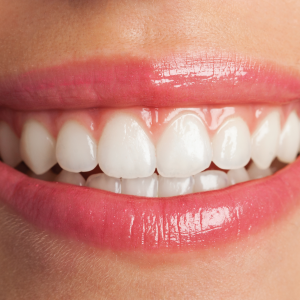
Antony van Leeuwenhoek — possibly best known for his pioneering work with the microscope — wrote in 1683 about examining his teeth and gums and identifying “a little white matter, which is as thick as if ’twere batter.” Mixing the substance with water and studying it under the lens of his new tool, he found all manner of tiny organisms “very prettily a-moving.” These were some of the very first glimpses into the microbiome.
 Centuries later, the mysteries of the microbiome persist.
Centuries later, the mysteries of the microbiome persist.
For example, an international group of researchers published findings in Science Advances in January 2019 claiming they’d found evidence suggesting a microbial agent as the cause of Alzheimer’s disease. These scientists claim that the microbes — much like those under van Leeuwenhoek’s microscope — first gain entry to the body through the gums.
Let’s be clear — in no way has this publication ended the debate about what causes Alzheimer’s disease or any other neurodegenerative disorder. However, it has pushed the hypothesis — that the microbiome is responsible for neurodegenerative disease — into its most assertive stance yet.
What do your gums have to do with your brain?
In short, these researchers argue that their findings show the same microbe that causes gum disease also causes Alzheimer’s disease.
 It’s called Porphyromonas gingivalis (P. gingivalis for short…or shorter, anyway), which may sound familiar from the common gum disease, gingivitis.
It’s called Porphyromonas gingivalis (P. gingivalis for short…or shorter, anyway), which may sound familiar from the common gum disease, gingivitis.
P. gingivalis is one of the key disease-causing microorganisms involved in the development of chronic periodontitis. It can quietly reside in the mouth without causing any trouble, but an overabundance of the bacteria can lead to inflammation of the gums and chronic periodontitis. That’s where this story begins – an observation that Alzheimer’s patients with active chronic periodontitis showed a greater decline in memory and thinking skills than patients without the gum infection.
Periodically, the bacteria can enter the bloodstream through common activities like chewing and flossing, traveling to other parts of the body and establishing itself there. For example, the authors of the paper note that a recent study of patients with heart disease found that 100% of those examined had P. gingivalis in their arteries. The authors hypothesized the bacteria might similarly find its way to the brain, playing a role in the neuronal damage associated with Alzheimer’s.
What have researchers linked exactly?
The scientists who wrote this paper say that they’ve shown P. gingivalis plays a key role in cognitive decline.
They found the bacteria in the brains of deceased patients with Alzheimer’s as well as the microbe’s DNA in the spinal fluid of living patients. In fact, the toxic enzymes associated with P. gingivalis turned up in more than 90% of Alzheimer’s brain samples.
Further study linked exposure to those toxic enzymes — called gingipains — to dying neurons and higher levels of beta amyloid, which makes up the majority of the plaque found in the brains of Alzheimer’s patients.
The researchers even say they found that giving mice small molecules that inhibit gingipains helped clear the P. gingivalis in the brain and reduce the production of beta amyloid and its resulting neurodegeneration.
So we know what causes Alzheimer’s now?
No.
 Let’s be clear about that. Take the statement from the Alzheimer’s Society on the results:
Let’s be clear about that. Take the statement from the Alzheimer’s Society on the results:
This latest study found evidence of gum disease bacteria in the brains of people who died with Alzheimer’s, but also found that people who didn’t have Alzheimer’s showed some of these same signs.
The laboratory work does suggest that this infection could cause damage to cells of the brain but there isn’t yet clear evidence that it can cause this damage in people or result in Alzheimer’s.
This isn’t the final answer. However, it is a hypothesis with real evidence backing it, and it stems from an increasingly popular view on the causes of Alzheimer’s disease.
Even before this paper, scientists were starting to argue that Alzheimer’s was the result of some microbial pathogen. The theory starts with the idea that beta amyloid is produced as part of an anti-microbial response in the brain.
This paper argues they found evidence of the same. Essentially the thinking goes that when bacteria like P. gingivalis show up in the brain and produce toxic gingipains, the body produces beta amyloid as part of a protective response. The beta amyloid is sticky, so to speak, and it accumulates, forming a plaque in the brain. That plaque disrupts neural function and leads to cognitive degeneration.
The concept that beta amyloid may be part of the body’s protective response to microbial infection is a dramatic shift from the historical idea that beta amyloid is the toxic initiator of Alzheimer’s. This study marks a growth in momentum for the idea that microbes are at very least a contributing factor to neurodegenerative disorders, especially Alzheimer’s disease. Should that prove true, it offers a new approach to treatment, as researchers can test different ways to either prevent, delay or even reverse symptoms.
The search continues
This paper came with a flashy title, and that led to some flashy headlines. Make no mistake, the hypothesis that P. gingivalis contributes to or causes Alzheimer’s disease has intriguing evidence behind it. However, planned clinical trials to further test that premise will give us a better idea of what that evidence means.
Until then, what we can say for sure is that we still have much to learn about our microbiome and its overall impact on our health — even 350 years after Antony van Leeuwenhoek scraped his teeth and found life on their surfaces, very prettily a-moving.
To schedule a media interview with Dr. Neil Lamb or to invite him to speak at an event or conference, please contact Margetta Thomas by email at mthomas@hudsonalpha.org or by phone: Office (256) 327-0425 | Cell (256) 937-8210
Get the Latest Sharable Science Delivered Straight to Your Inbox!
[gravityform id=19 title=false description=false ajax=true][wprpw_display_layout id=8]


